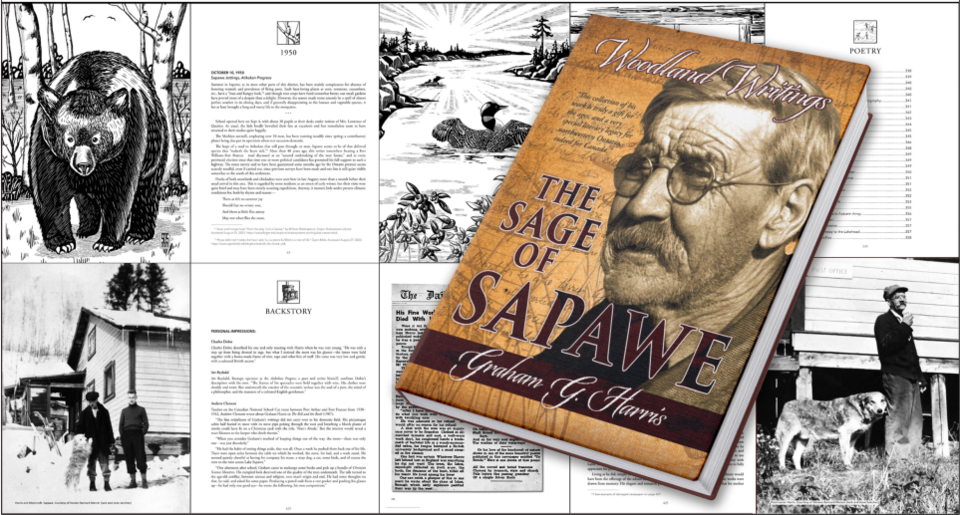ATIKOKAN – The Museum of Atikokan is proudly presenting the life of writer Graham G. Harris with the sale of his collection of poetry and essays, which offer a dynamic perspective of the bustling industry, innovative enterprise, and rustic beauty of nature in Northwestern Ontario in the 1900s.
Put together by the museum, the sale of Harris's collection will help raise funds to build a monument that will be placed on Harris’s grave.
“He died without a marker and he was buried by the Anglican Church in Atikokan and probably the community of Sapawe as well. I know the pallbearers were people from his community, but afterwards he was lost to history,” said curator Lois Fenton.
Being the museum’s only employee and curator, Fenton often finds herself gifted with artifacts from around town. One such gift was issues of the Atikokan Progress newspaper that date back to the 1950s when Harris’s weekly column, Sapawe Jottings, was published.
“He's an intriguing man and I feel as though I've come to know him through this whole process of reading his writing. He's probably a little bit eccentric, but generally at his core he's a gentle soul with a charming wit,” Fenton said.
The significance of finding Harris's column holds two meanings for Fenton.
One is that she holds a comprehensive history of the community of Sapawe from 1950 to 1958. The other is as a fan of his work.
“He was bringing the community together. The common subjects of what people were talking about. From what he's reported on it's easier to approach a neighbour if you have a common subject.
"I definitely can see exactly how this worked for their community. And as I said, he wrote for the Atikokan Progress, which is a certain number of miles away. But of course, it was the biggest newspaper in the area and this was the era of iron mining in Atikokan,” Fenton said.
During the 1950s, Harris lived in a small cabin in Sapawe where he wrote with wit and proficiency about various musing on historical events and particularly the Sapawe culture.
But that wasn’t all he wrote. In the 1920s, Harris's essays would be published in the Port Arthur News-Chronicle under the title of “Woodland and Water.”
Much of his writing, especially his poetry, involved capturing his environment, Fenton said.
Working as a prospector in Sapawe, Harris saw social and political points in history - including the 1919 Spanish Flu pandemic, the Great Depression, and the Second World War. However, Fenton stated that it was his observation and engagement with the natural world that stands out in his writing.
“He survived all of that, but his outlook wasn't complaining or whining," Fenton said.
"He had an optimism to him, to his writing and he comes out in this with a wit that is really engaging and you don't forget it. I think he must have been very entertaining to have at any local gathering. He valued everybody from seniors right down to children. He would stop and talk to them and, and engage with them.
“He wrote about nature, he wrote about the world around him and anybody who's looking at climate history - it's right there. He's talking about the phenomenon. He's dating when the frost hits or when the ice goes out. It's an incredible record,” she said.
Fenton encouraged those who want to learn more about Harris to explore the Atikokan Museum and pick up a copy of Harris’s collection of poetry and essays. All proceeds go toward the Harris Memorial.
“Selling the book has been a major fundraiser. We started by just selling the poetry. There are 91 poems in just one single volume and when people would hear about it and what we were doing, they would give me $20 and put the extra $5 in there for the donation.
"I've had people who've just come forward and said 'I'd like to make a donation,' which is extremely generous and very heartwarming,” Fenton said.
